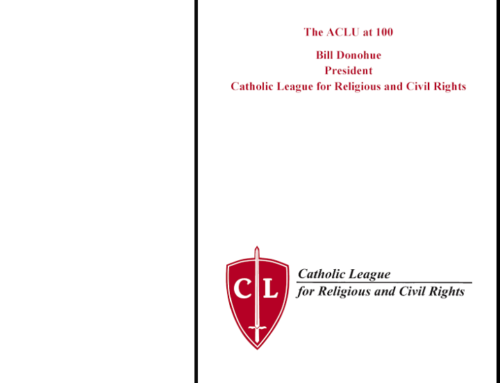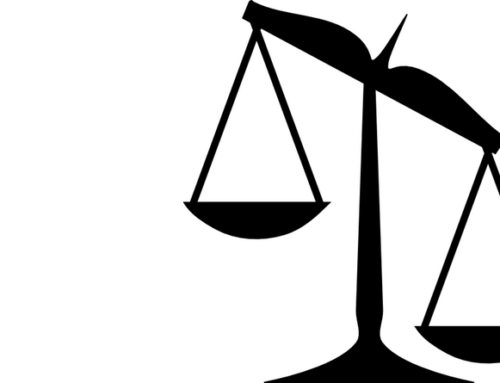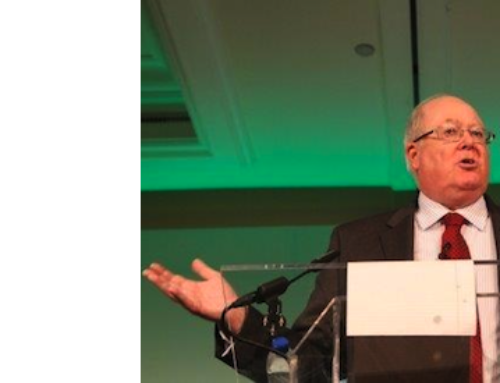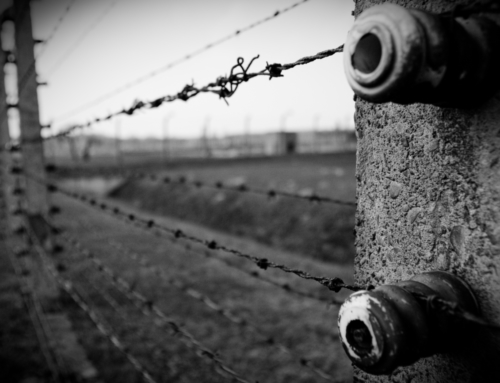Some Key Misunderstandings Regarding the Child Sexual Abuse Scandal
and the Catholic Church
William O’Donohue, Ph.D.
Olga Cirlugea, B.A.
Lorraine Benuto, Ph.D.
Department of Psychology
University of Nevada, Reno
We are clinical psychologists (the second author is a graduate student in a doctoral training program) who have watched the sexual abuse scandal unfold over the past few decades. We have been treating sexual abuse victims (the first author for over 30 years); we have treated adults who when they were children have been abused by priests. We have been involved in cases where adults alleged that they have been abused by priests, but the priests were denying that any wrongdoing. We currently work in a university based clinic that is funded by a grant from the National Institute of Justice that allows us to provide free treatment to children who have been sexually abused and adults who have been sexually assaulted. Collectively, we have treated over 2,000 children who have been sexually abused and also have worked in cases where children have falsely accused others of sexual abuse. We have also published books on child sexual abuse (O’Donohue and Geer, 1989: Laws and O’Donohue, 2008). and also a number of peer reviewed journal articles. Thus, we believe we are in a position to make several points regarding this scandal that we believe that are not fully appreciated.
First, we believe that this matter is quite complex—and it needs to be seen with an appreciation of its complexity and not reduced to simple statements. Statements like, “All priests are pedophiles;” “Most priests are pedophiles;”. “The Catholic Church tried to sweep all of this under a rug.;” “Celibacy causes pedophilia;” “Children never lie;” etc are just that—simplistic, even prejudicial, views that do more harm than good. We all need to be careful that the tragedy of some children being abused by some priests are not hijacked to be used by those with secular biases or with longstanding problems associated with prejudices towards Catholics for their political agenda against the Catholic Church. This in an important sense would be a second victimization of these individuals. Below we list what we think is a more accurate understanding of this phenomenon.
A Bit of Key Background: What are the Facts?
The facts—what actually happened—are sometimes difficult to discern. These can be partially shrouded in the mists of history. People offer differing accounts. There are certainly motivations to lie or distort—abusing a child is a serious crime and serious moral failing. But there are also motivations to falsely accuse—individuals can gain significant sums of money in settlements; individuals can have a political agenda against the church, or individuals may even deny that they have abused when they actually have been, to avoid their feelings of shame or embarassment—or even to protect their abuser. The reporting of abuse and deciding what actually has occurred is, again, no simple matter.
In 2002 the United States Conference of Catholic Bishops commissioned an independent study to address growing concerns about child sexual abuse in the Catholic Church in the United States. The Conference enlisted the John Jay College of Criminal Justice to conduct this study examining rates and characteristics of the sexual abuse within the Catholic Church. This study presents the best and most objective data on this phenomenon. The researchers found that a total of 10,667 individuals had made allegations of child sexual abuse against 4,392 Catholic priests between 1950 and 2002, and that most such acts took place between 1960 and 1984. The 4,392 priests made up 4% of all Catholic priests in the 14 Dioceses/ Eparchies in the United States.
These statistics contradict the misconception that a majority of priests commit sexual abuse and even that priests are more likely to abuse than the general population. In fact, priests offend at the similar rates as the general population. Another common misconception is that most priests committing child sexual abuse were pedophiles, that is individuals attracted to prepubescent children. It turns out that the majority of victims (almost 75%) were between 11 and 17 years of age; therefore, a more accurate clinical term for these priests is hebephiles (showing sexual preference for children in their early years of adolescence)—rather than pedophiles. The major distinguishing feature of sexual abuse in the Catholic Church is that the majority of alleged victims are male (81%), while in the general population females are more likely to be sexually abused (Pereda et al., 2009). This fact also suggest that part of the problem is a hebephilic homosexual orientation on the part of priests—adolescent boys are the most vulnerable population to be victimized—which becomes a political hot potato, given the secular agenda to normalize homosexuality.
Another key difference found in the study is that a little less that half of the priests (1881) were found to be subject to unsubstantiated allegations. An unsubstantiated allegation was defined as “an allegation that was proven to be untruthful and fabricated” as a result of a criminal investigation. This rate of false accusations is much higher than found in the general population. Additionally, 23% of the priests who were accused of abuse were identified as suffering from behavioral or psychological problems ranging from alcohol and substance abuse to depression and a past history of coercive sex, although most never received treatment for these problems. This would suggest that helping priests with their mental health issues would be an important part of future prevention efforts.
More than half of the priests had only one allegation brought against them. Also, it is important to note that a few priests accounted for a disproportionate number of victims: 3.5% of priests accounted for 26% of victims. Even though an investigation was conducted almost every time a report was filed, only 217 or 5.4% of priests were charged with a crime by a district attorney. Of the 217 priests that had criminal charges brought against them, a substantial majority (64%) were convicted; but still a significant number were not found guilty. Most received probation (88%) and/or a prison sentence (73%), while 44% went to jail and 18% were fined.
Do Priests Abuse More Than Other Clergy?
A 2011 John Jay College follow-up study examined sexual abuse in other religious institutions around the U.S. and found that most evidence came from case settlements, policy changes and trials receiving media attention. For example, 10% of Protestant clergy were involved in sexual misconduct, 2-3% of which committed sexual abuse. In 2007 Jehovah’s Witnesses settled 9 lawsuits with victims alleging that the church’s policies protected child sexual abusers. The Church Jesus Christ of Latter-Day Saints reported 3-4 yearly lawsuits over the course of the last 10 years, which translates to allegations in .4-.5% Mormon wards. The Jewish community has founded two sexual abuse survivors’ organizations, Survivors for Justice and Awareness Center, the latter of which provides “the names of 107 rabbis accused of sexual misconduct and 279 other trusted officials (for example, parents and counselors), as well as 85 unnamed abusers”. While we were were not able to find specific numbers concerning the prevalence of child sexual abuse in other religious institutions, we hope that the previous examples serve to show that the Catholic Church isn’t the only religious establishment faced with this problem.
Did Abuse Occur Simply Because Somebody Said it Happened?
The clear and simple answer to this question, is “No”. Although we do not know the exact percentage of false reports, it is our clinical experience and the consensus in the field that the majority of children reporting that they have been abused are telling the truth. It is clear that many children have been abused by adults, including priests, and this is morally reprehensible, a serious crime and effective measures need to be put into placed to prevent this in the future. However, again, as we stated, the matter is complex. Our field, for example, does not have clear statistics regarding the percentage of adults, who allege that they have been abused as children, are in fact telling the truth. Again, we believe that the majority, but not all, are indeed telling the truth. However, adults have unique pathways to false reporting (for example, they can be motivated by money; can be suffering from adult psychological problems such as delusions found in psychosis, etc). What causes false reporting?
Lies
Children and adolescents do not always tell the truth nor are there special topics (e.g., sexual abuse) in which they are incapable of lying. In fact while we don’t know exactly how often they lie about being sexually abused, research shows that those numbers are above zero (e.g. Kendall-Tackett, 1991 and Jones & McGraw, 1987; O’Donohue & Cirlugea, 2012). Furthermore, because children at times recant (meaning that they first stated that they had been abused and later stated that they were not abused; see Bradley & Wood, 1996) we know that children sometimes claim that they have previously lied or at least were mistaken. A variety of factors can influence the likelihood of children making false allegations. For example, children may have been coached by a parent involved in a bitter custody battle to make false statements against the other parent, or may have had a personal vendetta against the alleged perpetrator (see Heaton & O’Donohue, 2012 for a full explication of pathways to false allegations). It’s important to note that children can also lie by claiming that the abuse did not occur when in reality it did. This is more likely to happen if the child was threatened or coerced by the perpetrator.
False Memories
Beyond lying, false memories can also be formed. In fact, well over 100 scientific research studies have shown that both children and adults can and do form false memories. This research was spurred by the infamous McMartin Day Care case in the 1980s Manhattan Beach, California in which over 360 children alleged that they were abused, often in bizarre ways (for example, placed in planes and forced to watch babies being fed to sharks). In what was then the longest and most expensive criminal trial in California history, all parties were found not guilty. Dr. Michael Maloney examined the interviewing of the children and found that the interviewer used improper methods to question the children and that these were extremely suggestive, biased, and which lead to false memories on the part of the children. This spurred a number of academic research studies which attempted to understand what causes and how easy it is to form a false memory.
For example, in a study conducted Ceci and Liechtman (1992) young children were told that a visitor, Sam Stone, was clumsy and always broke thing that were not his. When “Sam” came to visit the children he did not touch or break anything. The next day the children saw a soiled stuffed bear and a torn book. Even though no child had seen Sam do anything, when asked a quarter of the children (25%) hinted that he might have had a part in the problem. Even though the children had not seen Sam do anything, their prior experience of being told that he was clumsy mixed in with their actual experience of observing him and they concluded that he might have had a part in the torn book and soiled bear.
In addition, over the next ten weeks the children were asked misleading questions/statements by the first interviewer such as, “I wonder if Same Stone got the teddy bear dirty on purpose or by accident?” On the tenth week, a second (seemingly independent) interviewer asked what had happened to the toys. The majority of children (72%) accused Sam of having ruined the toys, and nearly half of the children (45%) reported that they remembered seeing Sam do it. Thus the children’s new experiences (being interviewed and having it suggested to them that Sam Stone dirtied the teddy bear) are mixed into the memory of the past event (when Sam Stone came to visit).
Adults are not except from forming false memories. In fact, among adults research has demonstrated time and time again that eyewitnesses often confuse misleading post-event information with what they have witnessed (e.g., Steffens & Mecklenbräuker, 2007) thus developing false memories. Elizabeth Loftus of the University of California, Irvine has consistently found that about 25% of adults are so suggestible that fairly simple suggestions result in significant false memories of events that in fact did not occur when they were children (e.g., that they were lost in a mall).
Repressed Memories
A repressed memory is a memory of some major event that while initially stored in memory (for example, while it is occurring—is allegedly completely erased (allegedly by some sort of process beneath awareness), often for decades, that suddenly emerges often after some triggering event. Historically there has been much debate regarding the existence of repressed memories (McNally, 2003) despite the large amount of scientific evidence that clearly shows that repressed memories simply don’t exist (McNally, 2003; McNally, 2004; Piper, Pope, & Borowiecki, 2000). Furthermore research studies that involve traumatic events that have been verified as having actually occurred indicate that people do not forget their trauma (Pope, Oliva, & Hudson, 1999) and instead traumatic events are actually quite memorable and can even lead to the development of PTSD for many victims (McNally & Geraerts, 2009). McNally and Geraerts (2009) further discuss evidence that suggests that some repressed memories are simply not plausible due to their fantastical nature (e.g., space alien abduction) and usually surface after a problematic recovered memory procedure.
Despite the scientific evidence, the legal system has used repressed memories to convict people, including priests, on charges of child sexual abuse. For example, the Massachusetts Supreme Court affirmed the conviction of Paul Shanely (a defrocked priest accused and convicted of sexually abusing a child who later recalled this abuse and alleged repressed memory) despite an amicus brief signed by almost 100 distinguished psychologists and psychiatrists essentially categorizing the repressed memory phenomenon as junk science (FMS, 2009).
Conclusions
Children have been abused by priests and it is clear that this is a terrible betrayal of trust, a serious injury to these children, and a criminal as well as a moral failing. However, an examination of the best studies suggests that priests abuse at about the rate found in the general population; and that it is not clear that Catholic priests abuse children at a higher rate than other clergy. Certainly, beliefs that “most priests abuse” or that priests are more risk to children than other individuals, are not justified. Second, the pattern of abuse is rather unique: individuals who are victimized by priests are more likely to be adolescents and males. Thus, clinically these are cases of homosexual hebephilia rather than pedophilia—i.e., adolescents are being abused rather than prepubescent children. This does not make it any less of a crime or a moral failing—but it does suggest that an improved understanding of who is at risk which can be particularly important in future prevention efforts. Thirdly, there is evidence that priests have a higher rate of false and unfounded allegations than adults in the general population. Less than half of the allegations were found to be substantiated and even with those that were criminally prosecuted a large number—nearly a third—were found not guilty. This raises important questions about the phenomenon of false allegations. Evidence is reviewed regarding the formation of false memories, and lying for secondary gain. In addition, there is concern that cultural prejudices against the religious and particularly against Catholics can come into play.
Thus, we conclude by warning against a rush to judgment. Concern for past victims, and intelligent prevention efforts to reduce the rate of abuse to zero, certainly must be prioritized. But should also be a priority to make sure that prejudices against priests or against the religious, or against Catholics do not come into play to demonize innocent individuals and to besmirch what can be a noble profession and an important cultural institution.
References
Bradley, A. R., & Wood, J. M. (1996). How do children tell? The disclosure process in child sexual abuse. Child Abuse & Neglect, 20881-891.
Ceci, S. J., & Leichtman, M. D. (1992). I know that you know that I know that you broke the toy: a brief report of recursive awareness among 3-year-olds. In S. J. Ceci, M. D. Leichtman, & M. Putnick (Eds.), Cognitive and social factors in early deception (pp. 1–9). Hillsdale: Erlbaum.
Cohen, R. L., & Harnick, M. (1980). The susceptibility of child witnesses to suggestion: An empirical study. Law And Human Behavior, 4(3), 201-210.
Cole, C. B., & Loftus, E. F. (1987). The memory of children. In S. J. Ceci, M. Togalia, & D. Ross (Eds.), Children’s eyewitness memory (pp. 178-208). New York: Springer-Verlag.
Heaton, J. & O’Donohue, W. (2012). Pathways to false allegations of sexual abuse. Journal of Forensic Practice.
John Jay College of Criminal, J. (2004). Nature & scope of the problem of sexual abuse of minors by Catholic priests & deacons in the United States.
John Jay College of Criminal, J. (2011). Causes and context of sexual abuse of minors by Catholic priests in the United States, 1950-2010.
Jones, D. P., & McGraw, J. (1987). Reliable and fictitious accounts of sexual abuse to children. Journal Of Interpersonal Violence, 2(1), 27-45.
Kendall-Tackett, K. A., & New Hampshire Univ., D. b. (1991). How Many Children Lie about Being Sexually Abused?: A Survey of Mental Health and Law Enforcement Professionals.
King, M., & Yulle, J. (1987). Suggestibility and the child witness. In S. J. Ceci, M. Togalia, & D. Ross (Eds.), Children’s eyewitness memory (pp. 178-208). New York: Springer-Verlag
Laws, D.R. & O’Donohue, W. (2008). Sexual deviance. New York: Guilford.
McNally, R. J. (2004). The science and folklore of traumatic amnesia. Clinical Psychology: Science and Practice, 11, 29-33.
McNally, R. J. (2003). Remembering trauma. Cambridge, MA: Belknap Press/Harvard University Press.
McNally, R. J., & Geraerts, E. (2009). A new solution to the recovered memory debate. Perspectives On Psychological Science, 4(2), 126-134.
O’Donohue, W. & Circulegea, O. (2012). How often to children lie about sexual abuse?, manuscript in preparation.
O’Donohue, W., & Fanetti, M. (1996). Assessing the occurrence of child sexual abuse: An information processing, hypothesis testing approach. Aggression and Violent Behavior, 1(3), 269– 281.
O’Donohue, W. & Geer, J.H. (1989) The sexual abuse of children. New Jersey: Lawrence Erlbaum.
Pereda, N., Guilera, G., Forns, M., & Gómez-Benito, J. (2009). The prevalence of child sexual abuse in community and student samples: A meta-analysis. Clinical Psychology Review, 29(4), 328-338.
Piper, A. R., Pope, H. R., & Borowiecki, J. (2000). Custer’s last stand: Brown, Scheflin’ and Whitfield’s latest attempt to salvage ‘dissociative amnesia’. Journal Of Psychiatry & Law, 28(2), 149-213.
McNally, R. J. (2003). Recovering Memories of Trauma: A View From the Laboratory. Current Directions In Psychological Science (Wiley-Blackwell), 12(1), 32-35.
Steffens, M. C., & Mecklenbräuker, S. (2007). False memories: Phenomena, theories, and implications. Zeitschrift für Psychologie/Journal of Psychology, 215, 12-24.
Tomlinson, T.D., Huber, D.E., Riethb, C.A. & Davelaarc, E.J. (2009). An interference account of cue-independent forgetting in the no-think paradigm. Proceedings of the National Academy of Sciences, 106. 15588-15593







